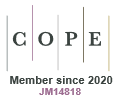Investigating the Australian Bureau of Meteorology GMS satellite archive for use in tropical cyclone reanalyses
M. Broomhall, B. Berzins, I. Grant, L. Majewski, M. Willmott, A. Burton, L. Paterson, B. Santos, D. Jones and Y. Kushelov
Australian Meteorological and Oceanographic Journal
64(3) 167 - 182
Published: 2014
Abstract
The Bureau of Meteorology (the Bureau) has an extensive archive of geostationary satellite imagery, which is derived from a number of data sources. Most of this data now exists in a single data format, namely Man computer Interactive Data Access System (McIDAS) AREA. The McIDAS system was commissioned in the Bureau in 1985 and used to digitise locally received analogue GMS-3 data as its geostationary data source. This was the first McIDAS system to handle real time GMS data. McIDAS is the principal display and analysis tool utilised by the Bureau and is currently used to analyse tropical cyclone (TC) data received from satellites. This study is concentrated on data calibration from Geostationary Meteorological Satellite (GMS) 1 to 3 for the years 1981 to 1989 as these data had recently been obtained from the Japan Meteorological Agency (JMA) in VISSR format. It is hoped that the new data can be utilised within the McIDAS system to perform reanalysis of TCs to give a consistent 30 year record. This study revealed many possible sources of uncertainty with the initial calibration of the GMS data and highlighted issues with the methods of utilisation within McIDAS. It was discovered that there is the possibility, during the solar equinox periods, that error in temperature estimates from GMS data for temperatures of 160 K and above could exceed ±6 K due to the calibration procedure. Smaller errors due to the implementation of the calibration procedure are expected at other times during the year. A comparison of the JMA GMS data calibration with the International Satellite Cloud Climatology Project (ISCCP) and HURicane SATellite (HURSAT) calibrations found a definite trend toward colder temperatures being produced when using the ISCCP calibration but no noticeable temperature trend when using the HURSAT calibration. HURSAT data were then selected to investigate how data calibration affected Dvorak analysis and the determination of TC intensity. Dvorak analysis for 11 cyclones using the JMA calibration and the HURSAT calibration was undertaken. This found that there was no detectable difference unless an eye or embedded centre pattern was noticed in the scene. Only 39 such scenes were identified from the 703 scenes examined. Of these 39 scenes three showed a difference in analysis of 1.0 T number, eight showed ±0.5 T number difference and 28 were ranked as exactly the same. This indicates that Dvorak analysis will not be affected by small errors in calibration. Presently, the Bureau has more than 30 years of data of Geostationary Satellite IR radiance and temperature data in McIDAS AREA format. It is now possible to use a single system (McIDAS) and a single method (EIR Dvorak) to reanalyse all available geostationary data for the Australian TC region.https://doi.org/10.1071/ES14016
© Commonwealth of Australia represented by the Bureau of Meterology 2014. This is an open access article distributed under the Creative Commons Attribution-NonCommerical-NoDerivatives 4.0 International License (CC BY-NC-ND).


